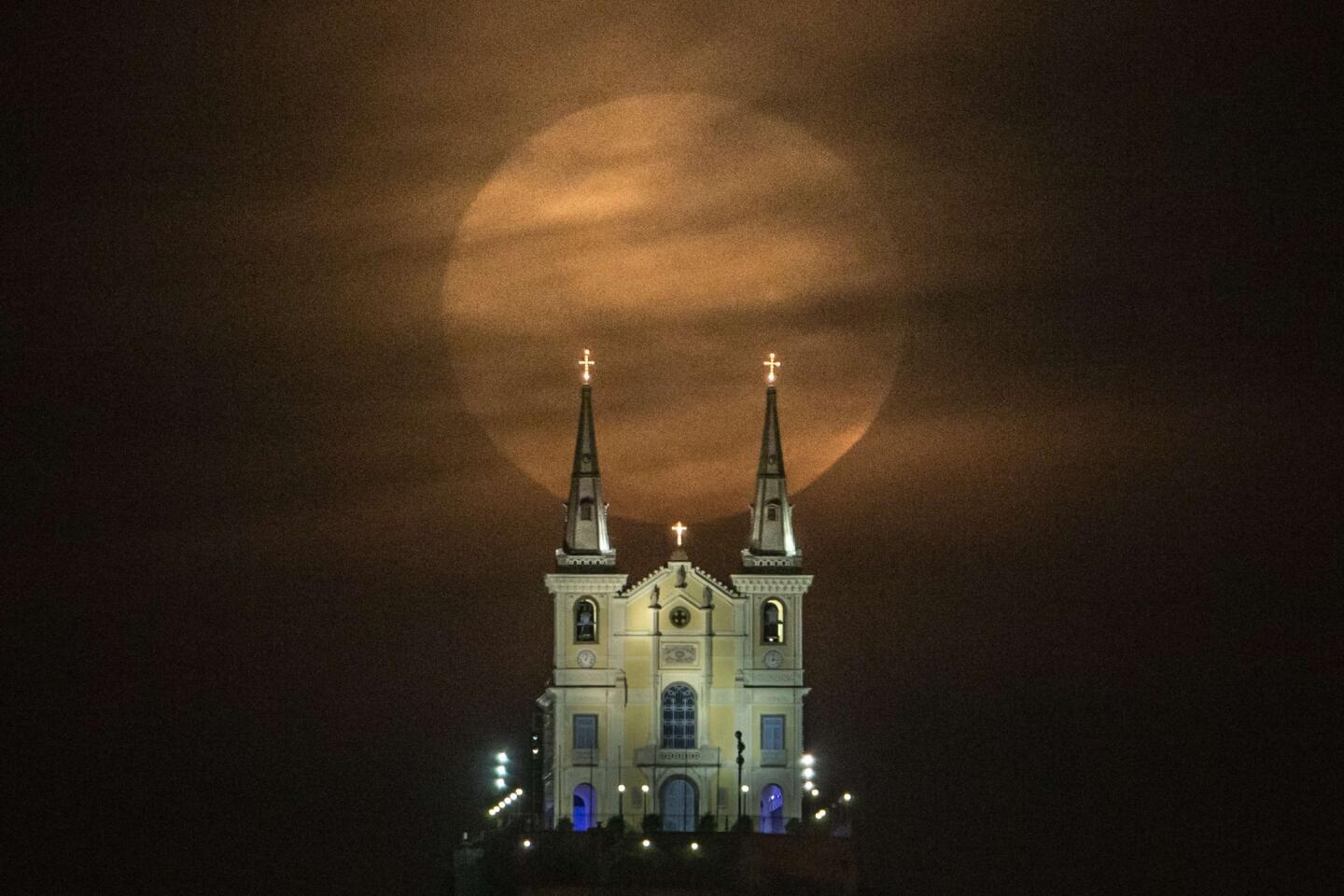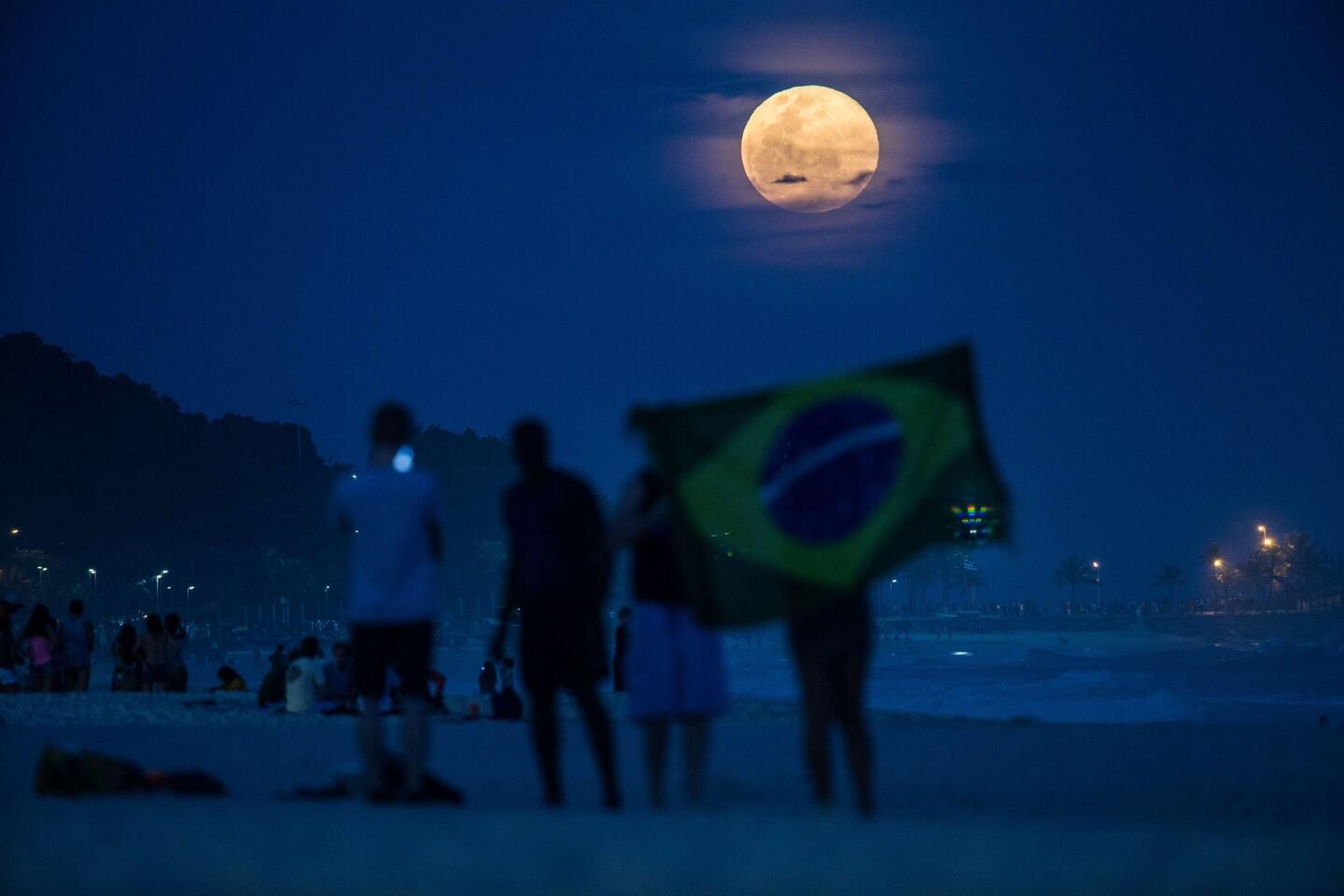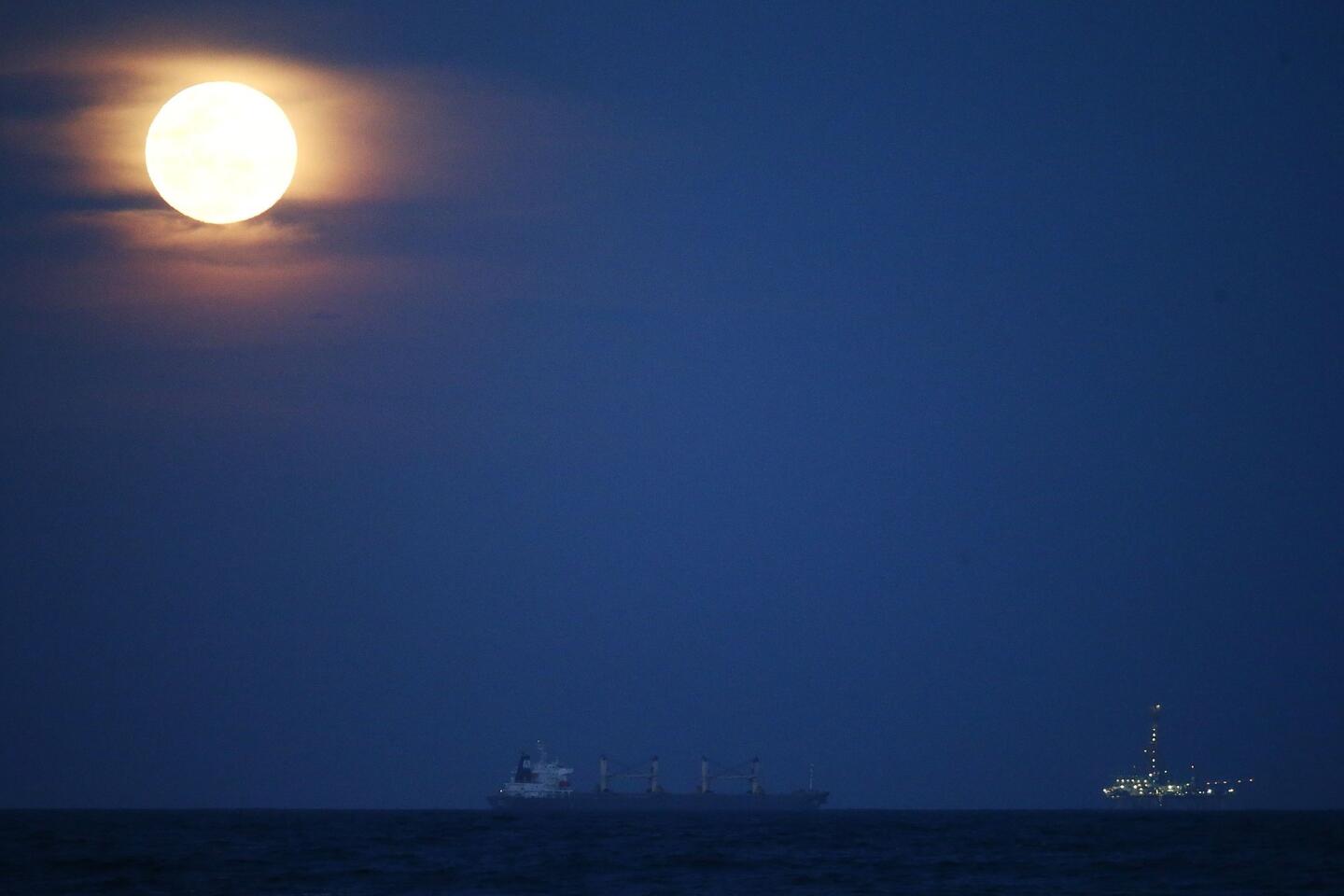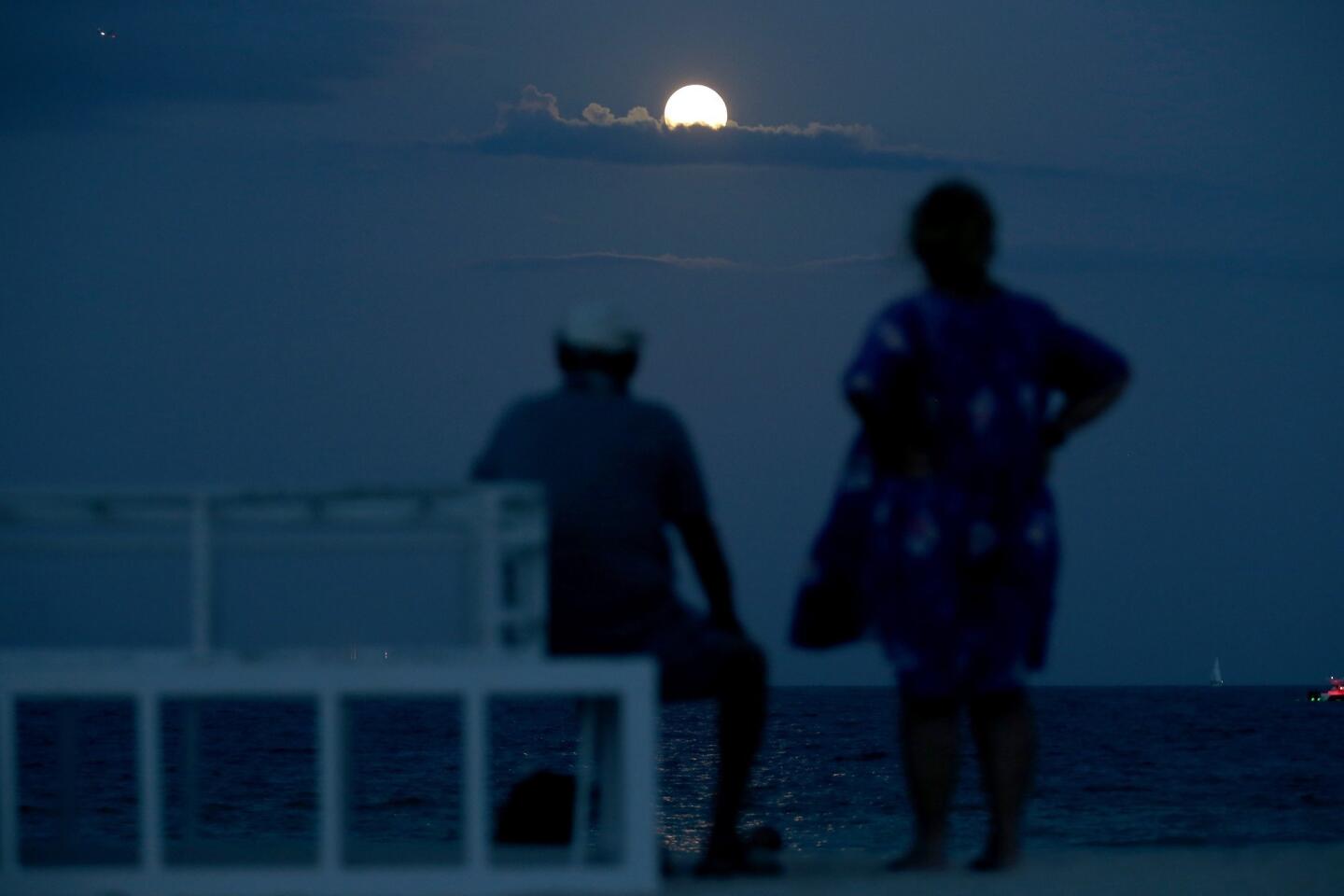Biggest supermoon of the summer rises this weekend
- Share via
Hey there sky watchers, it’s supermoon time!
This Sunday, when the full moon rises in the night sky, it will appear about 14% bigger and 30% brighter than an average full moon. That’s because the moon will turn full within the same hour that it is closest to us in its orbit around the Earth.
As you may recall from science class, the moon does not move around Earth in a perfect circle. There are places on its orbit where it is closer to us, and places where it is farther away. When it is farthest from us we say it is at apogee. When it is closest to us, we say it is at perigee.
The technical term for the supermoon is a perigean full moon, but in 1979 an astrologer (not an astronomer), came up with the term supermoon to describe a moon that turns full at perigee. It’s a catchy name, and it stuck.
Supermoons are not necessarily super-rare. According to Geoff Chester of the U.S. Naval Observatory they occur, on average, once every 13 months and 18 days. And this summer they seem almost average, with three perigee moons occurring in a row.
The first in the series was July 12, and there’s another one coming on on Sept. 9. However, Sunday night’s supermoon is special because perigee will occur just 26 minutes before the moon turns full, and Sunday is also what’s called proxigee, the closest perigee of the year. (Learn more about this at Skyandtelescope.com)
Unfortunately, the timing of this supermoon is not so super. It coincides with the peak of the Perseid meteor shower, which usually puts on the best meteor display of the year. But this year most of the meteors will be drowned out by the extra bright lunar light.
It should be noted that many serious astronomers have grown weary of the term “supermoon.” Although supermoons do indeed look bigger than average full moons in side by side comparisons, the difference is very difficult to notice in the vast darkness of the sky.
But I say, who cares? Those of us who live in light-polluted cities like Los Angeles are starved for some cool things to see in the night sky, and knowing the moon is a little bit bigger and a little bit brighter than usual is an excellent reason to look up.
I love science! If you do too, follow me @DeborahNetburn and “like” Los Angeles Times Science & Health on Facebook.

















